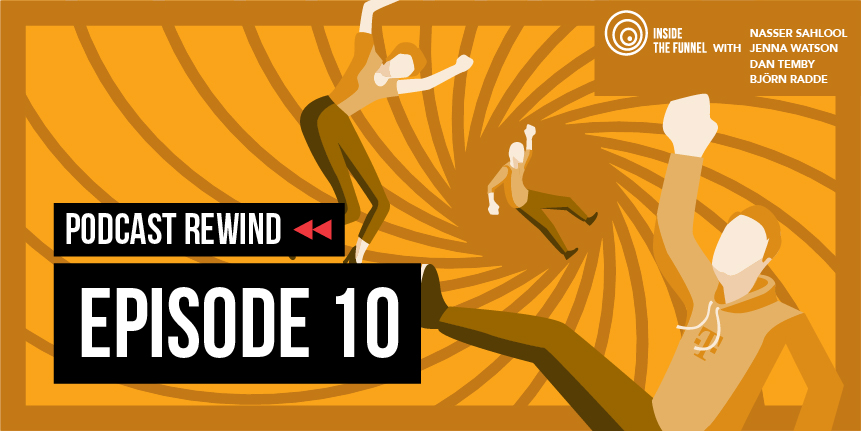Marketers have long joked that B2B really stands for “boring to boring”. But does that gag still ring true in 2021? Haven’t business-to-business frameworks evolved since the dawn of the digital age? Is B2B really less interesting than its consumer equivalent? Well, there’s nobody better to quiz on the topic than Björn Radde.
Björn is Head of Digital Marketing at T-Systems International, Deutsche Telekom’s B2B division and sister brand to T-Mobile. With 28,000 employees and countless customers across Europe, Asia, and North America, T-Systems is a true B2B heavyweight—putting Björn in the perfect position to dispel myths, reveal truths, and share his unique perspective on B2C’s less glamorous cousin.
-
B2B is the most difficult form of marketing
Having proven his worth in both consumer- and business-facing marketing roles, Björn believes B2B is the more challenging arena due to the fact that it generally has much longer decision cycles, more complex nurturing streams, and many more people to engage for a single sale.
Take the typical B2C example of booking a hotel room or buying running shoes. The transaction itself is simple, and opportunities to cross-sell follow naturally (“Buying trainers? You might be interested in this running vest!”). In contrast, a multi-million dollar tech investment can’t be so easily parlayed into follow-up transactions (“You bought cloud computing from us, so why not IOT as well?”).
Selling to technologists, of course, comes with its own set of challenges (naming no names… Dan). They’re subjected to countless cold emails, creating an environment of noise, irrelevance, and hard-nosed solicitation. Timing, too, is crucial: ideally, an organization would be coming towards the end of an existing contract, feeling the need for a specific service or product. Mix in the personal preferences and triggers of the actual human beings making the decisions and you have a heady brew of opportunity, risk, and happenstance. In other words, B2B ain’t easy.
-
What is B2B’s single biggest challenge?
Yes, B2B has traditionally been considered a relatively dry discipline that usually lags behind B2C in various ways. Even so, the people involved are, well, people. Although B2B transactions are often on a far grander scale than B2C, they nevertheless have to target and engage individuals—not broad corporate entities—to gain traction.
Björn cites ServiceNow’s Christmas adverts as a great example of B2C-style marketing (Santa can’t meet Christmas demand until the elves discover ServiceNow’s workflow solutions), as well as a recent Amazon Web Services (AWS) campaign that showed the extent to which AWS services power everyday conveniences that inspire wonder in a child.
Of course, the idea that B2B buyers are also B2C buyers works both ways, with the last best experience—whether it’s personal or for business—becoming the new benchmark. If you trust Amazon with a $10 personal purchase, a positive experience might make you more inclined to consider Amazon for professional purposes. A poor experience, however, might just persuade you to look elsewhere when it comes to that $10 million, career-critical B2B deal.
-
CRM in B2B
Knowing that B2B transactions generally come with long decision cycles and an inordinate number of stakeholders, how do you interpret your data to build accurate customer profiles? Later on, how do you prove the impact of your marketing efforts?
Unsurprisingly, customer relationship management (CRM) is a different beast in the world of corporate sales. In B2C, you can effectively track customers from a first click or visit, all the way through to purchase, then retarget as appropriate. It’s effortlessly easy to measure B2C success (“We sold 1 million shoes due to this banner”), but B2B deals often lack a tangible connection between sales and marketing. You may know the deal and revenue, but you don’t always know the trigger on marketing side.
T-Systems’ solution? Attempt to reverse engineer the sales funnel. Pinpoint the most significant deals, gather all relevant data, and travel back up the funnel to identify the channel(s) responsible—or at least assign approximate weight to each tactic.
-
B2B and the death of third-party cookies
Even today, a full two years before Google plans to end support for third-party cookies, T-Systems can track only 50% of its traffic because of ad blockers, cookie blockers, and other privacy-preserving tech. As such, it is an organization that is not only comfortable making educated guesses, but understands the need to have users authenticate, create accounts, and become first-party.

Even so, Björn expects that a future built on blockchain will see new clients share their information for one-off transactions only, then effectively disappear. His marketers will be back to square one each time, using instinct and experience to find untapped prospects.
Fortunately, B2B brands may prove to be relatively insulated against the demise of third-party cookies. Why? Because they are inherently more focused on first-party data. Just think how many B2B sales cycles require some form of registration (“Download this white paper!”) to generate first-party identifiers. With a goal to build complex organizational personas rather than individual ones, B2B marketers simply have to stitch together various first-party signals from their existing data. In that sense, they may be much better prepared than their peers in B2C.
-
How marketing insights affect B2B mindsets
B2B marketers increasingly have to meet prospects where they are: social media. It’s an easy enough ask for start-ups, but engaging prospects one-on-one via social is a foreign concept for many long-established organizations. To plug that particular gap, T-Systems provides internal training on digital principles and practices, helping its marketers to not only master various platforms but build compelling personal brands in the process.
Björn himself, as unofficial dean of T-Systems’ digital marketing university, arranges sessions by guest speakers—covering everything from Clubhouse to marketing automation—and allows marketers to set aside two hours each Friday exclusively for self-development. The result is a culture of continuous collaboration that defies B2B’s reputation as B2C’s stale cousin.
Want to hear it all for yourself? All you have to do is press play!




